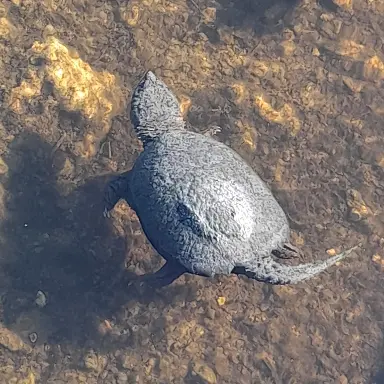There are many different methods for removing carbon using biomass. These include the creation of biochar, which is made by heating biomass in low-oxygen environments to produce a charcoal-like soil additive that sequesters carbon
Total wild guess, I’ve probably made about 100 pounds (45kg) of raw biochar, so not a lot. I intend to get some large stainless steel barrels to build a typical inner/outer chamber TLUD system common on youtube and get serious about making huge amounts (for a household) of biochar.
One thing: it’s important to co-compost the biochar. This means adding it to a hot, biologically active compost bin, which will change but not biodegrade the biochar. This is important for two reasons: first, raw biochar is at first hydrophobic and will also temporarily pull nutrients out of the soil. The composting process addresses these issues. Second, raw biochar can often be coated in polycyclic aromatic hydrocarbons. These PAHs are carcinogenic but can be destroyed by composting for a year or two.
I’d love it if there were a consumer product designed to both create biochar and capture the syngas for later use in a cookstove, to replace propane. Or failing that, a healthy syngas industry.
I know some people make biochar in their fireplaces or woodstoves by putting a lidded stainless steel container in during a fire, so the feedstock inside turns into biochar while the syngas escapes (like steam from a lidded cooking pot) and then combusts to create heat. But in my experience, you either get too much heat and can damage your fireplace/stove, or you turn the air way down and send smoke up the chimney, neither of which are acceptable to me. So I’ll do the outdoor TLUD but would greatly prefer to capture that syngas because it could be used for constructive purposes.
I made an electric biochar reactor to test the idea of capturing the syngas! What a magnificent smoke factory! https://www.openairforum.org/t/experiment-4-electric-fired-biochar-reactor-d/838/1 – I did collect a bit of pyrolysis oil but my primitive gas collection system was no match for the smoke particles and the garage will probably never be the same. They say pyrolysis oil production is favored by “fast” pyrolysis and at first I did not know what that meant - 30 minutes seemed relatively fast to me. But it turns out that fast means several SECONDS. To do that you need biomass cut into small pieces and heated very quickly. A way to do that is with molten salt but for some reason, my wife has forbidden this class of experiments in our garage for now . . .
Phenomenal work, very impressed! I’m kind of shocked at the idea of reliably performing pyrolysis in seconds, that sounds like it would require the energy of a massive fresnel lens and be quite dangerous. I do extensive solar cooking from late spring to fall but am pretty leery of using serious focused energy.
Anyway, very cool. What did you do with the resulting pyrolysis oil? I know little about it beyond its capacity for heat generation through combustion.
I think the most likely route to fast pyrolysis will be as an adjunct to power generation with solar power towers in the midst of heliostat mirrors - just speculation.
I only made a small amount of pyrolysis oil - not enough for any further experiments. I recently have read that it can contain quite an array of fairly toxic benzene-family compounds. It could be refined and “cracked” to make a range of products now made with petroleum, but I just washed mine down the drain into my septic tank (where it will probably remain for some centuries).
I recently have read that it can contain quite an array of fairly toxic benzene-family compounds.
That wouldn’t surprise me. Probably the best thing we can do for the time being is to immediately combust it for heat. The heat could be used to maintain a constant pyrolysis process, adding in more feedstock basically forever, or to heat buildings. That would be one way to bootstrap a biochar industry so that further research can determine ways to make syngas into a commercial product.
I’ve also been wondering about using biochar creation with syngas combustion for water desalination or just plain running a steam turbine. Seems like there’s a lot of potential.
I like “carbon mineralization” a lot more than “enhanced weathering”. And the article also mentions the distinction nowadays between “carbon dioxide removal” and “carbon capture and storage”. Thanks for the updates, on terminology and otherwise.
I think mineralization is simply a broader category and enhanced weathering approaches are using the crushed rock directly. There are also mineralization methods that are based on electrochemical techniques using seawater as the mineral source, and sometimes using crushed rock for the mineral source (but not directly as the CO2 adsorbent).





